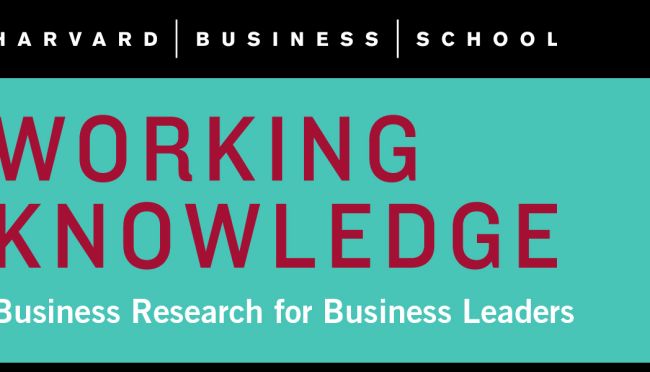Assets →
→

- 12 May 2020
- Working Paper Summaries
Elusive Safety: The New Geography of Capital Flows and Risk
Examining motives and incentives behind the growing international flows of US-denominated securities, this study finds that dollar-denominated capital flows are increasingly intermediated by tax haven financial centers and nonbank financial institutions.

- 31 May 2017
- Working Paper Summaries
Stock Price Synchronicity and Material Sustainability Information
This paper seeks to understand and provide evidence on the characteristics of emerging accounting standards for sustainability information. Given that a large number of institutional investors seek sustainability data and have committed to using it, it is increasingly important to develop a robust accounting infrastructure for the reporting of such information.

- 15 Aug 2016
- Working Paper Summaries
Liquidity Transformation in Asset Management: Evidence from the Cash Holdings of Mutual Funds
A key function of many financial intermediaries is liquidity transformation: creating liquid claims backed by illiquid assets. To date it has been difficult to measure liquidity transformation for asset managers. The study proposes a novel measure of liquidity transformation: funds’ cash management strategies. The study validates the measure and shows that liquidity transformation by asset managers is highly dependent on the traditional and shadow banking sectors.

- 15 Feb 2016
- Working Paper Summaries
Replicating Private Equity with Value Investing, Homemade Leverage, and Hold-to-Maturity Accounting
This paper studies the asset selection of private equity investors and the risk and return properties of passive portfolios with similarly selected investments in publicly traded securities. Results indicate that sophisticated institutional investors appear to significantly overpay for the portfolio management services associated with private equity investments.

- 25 Sep 2015
- Working Paper Summaries
Invest in Information or Wing It? A Model of Dynamic Pricing with Seller Learning
Dealers who need to price idiosyncratic products--like houses, artwork, and used cars--often struggle with a lack of information about the demand for their specific items. Analyzing sales data from the used-car retail market, the authors of this paper develop a model of dynamic pricing for idiosyncratic products, showing that seller learning has an impact on pricing dynamics through a rich set of mechanisms. Overall, findings suggest a potentially high return to taking a more serious information-based approach to pricing idiosyncratic products.
- 20 Jan 2009
- Research & Ideas
Risky Business with Structured Finance
How did the process of securitization transform trillions of dollars of risky assets into securities that many considered to be a safe bet? HBS professors Joshua D. Coval and Erik Stafford, with Princeton colleague Jakub Jurek, authors of a new paper, have ideas. Key concepts include: Over the past decade, risks have been repackaged to create triple-A-rated securities. Even modest imprecision in estimating underlying risks is magnified disproportionately when securities are pooled and tranched, as shown in a modeling exercise. Ratings of structured finance products, which make no distinction between the different sources of default risk, are particularly useless for determining prices and fair rates of compensation for these risks. Going forward, it would be best to eliminate any sanction of ratings as a guide to investment policy and capital requirements. It is important to focus on measuring and judging the system's aggregate amount of leverage and to understand the exposures that financial institutions actually have. Closed for comment; 0 Comments.
- 30 Aug 2004
- Research & Ideas
Real Estate: The Most Imperfect Asset
Real estate is the largest asset class in the world—and also the most imperfect, says Harvard Business School professor Arthur Segel. He discusses trends toward institutionalization, environmentalism, and globalization. Closed for comment; 0 Comments.

How do Private Equity Fees Vary Across Public Pensions?
As state and local defined-benefit pensions increasingly shift capital from traditional asset classes to private-market investment vehicles, this analysis shows that public pensions investing in the same private-market fund can experience very different returns.

More Than Memes: NFTs Could Be the Next Gen Deed for a Digital World
Non-fungible tokens might seem like a fad approach to selling memes, but the concept could help companies open new markets and build communities. Scott Duke Kominers and Steve Kaczynski go beyond the NFT hype in their book, The Everything Token.